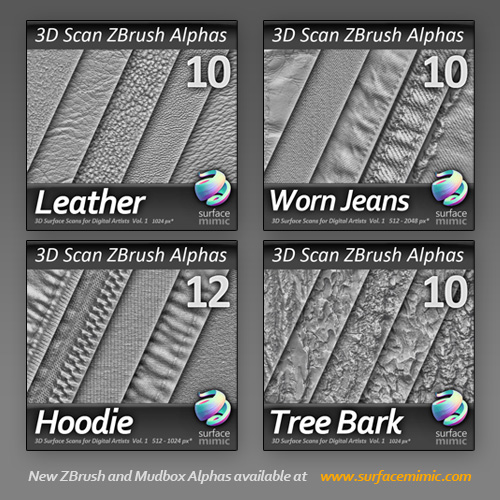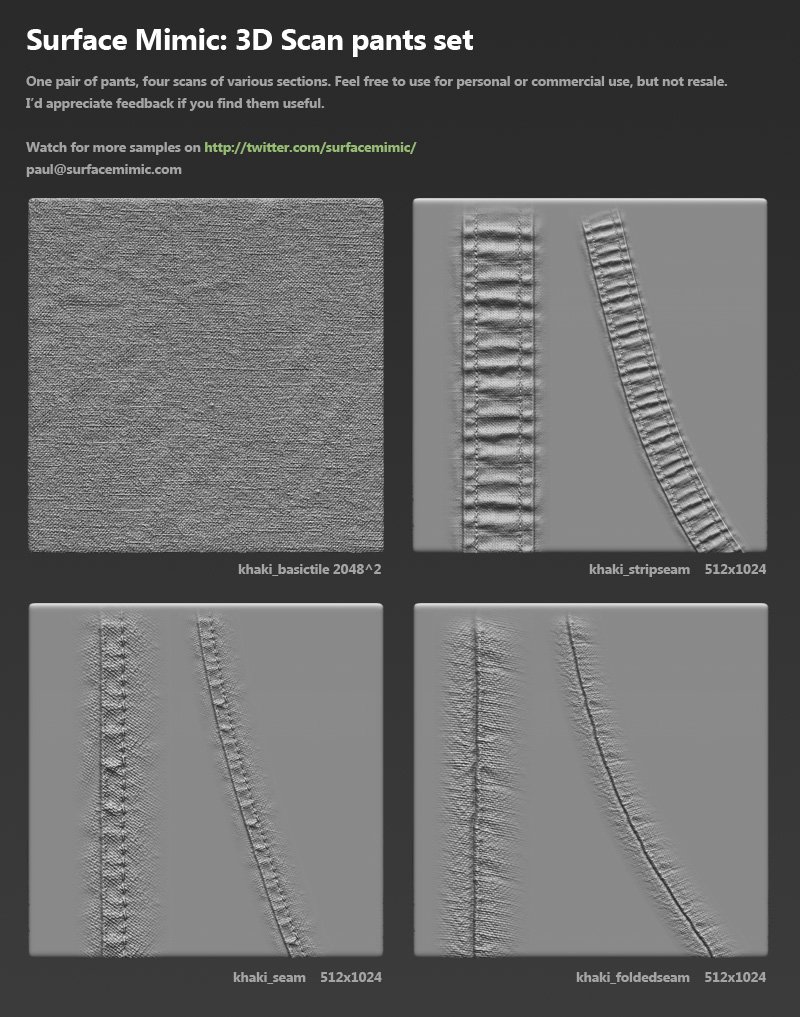thankyou very much, these look spectacular
Very cool, thanks a lot…
Awesome! Will try them as soon as I can  If you can do some more, like the different skin pore in the face, etc would be super cool too
If you can do some more, like the different skin pore in the face, etc would be super cool too  And like Energise said, more cloths seams would be super too!
And like Energise said, more cloths seams would be super too!
thanks
Very generous, thanks for sharing!
Thanks a lot for sharing!
Cheers!
You are doing great work  keep it up!
keep it up!
Nice resolution, Clean, Useful!
Thanks for sharing !
Thanks for sharing! I will see, what i can come up with!
Can’t wait to try these out! Thanks for sharing with us all! 
Thank you  !!, gonna make me a dress for the weekend
!!, gonna make me a dress for the weekend 
I wanted to inform everyone that I’ve been hard at work building more alphas. Its been a busy two months, but I’m finally ready to announce the launch of Surface Mimic.
I’d like to thank everyone who tested out my earlier alphas, and especially those who wrote feedback - it was a big help!
This week I have four Zbrush and Mudbox alpha packs available on the site.
10 Leather
10 Torn jeans
12 Hoodie seams and materials
10 Tree Bark
Alphas are also available individually, if you just want to try out one or two. I hope you like them, and as always, I’m grateful for feedback.

Full disclaimer. These alphas are for commercial purchase, but there are free samples available here.
wow, this is really cool stuff… how are you scanning these things out in the wild? Are you using something like the David scanner?
Thank you man! It’s really some top quality alphas! I’ll use it with care and love ^^
Keep it up!
very cool! thanks for sharing them!
Thanks for the comments guys. Testure, to answer your question I actually wrote up a page, since a lot of people are curious about the tech.
The link can be found here, but I’ll summarize below with pictures.
The method is called “Photometric Stereo“. The most basic configuration is a camera and a light. I take multiple shots of the same subject with the light at different angles to the surface in each photo.

The photos are fed into a program that uses a lot of math and RAM, and out pops a normal map. The normal map is generated via an equation (I = pN.L, Intensity = color x Normal (dot) Light Vector). Then I take the normal map and integrate the surface into a height, or displacement map.
You might assume its like crazybump, but its completely different because the real normal map is captured from the differences in light intensity across each photo.
Once I have the displacement map, I make them into tiling alphas, the way you would a plain old photo.
I’ve kept an amusing visual record of old prototypes at various stages. The modern scanner is a boring old camera, and portable light, and an 8 ball on a stick for light calibration. Portability and flexibility was a big factor, and unwieldy rigs tended to be heavy, and break often.

That’s a pretty impressive rig you’ve got there! Thanks for the info!
Out of curiosity- do you eventually plan on releasing your software, for studios who want to make use of this type of technology?
Great idea. Will have to play with the alphas. They look fantastic. Will there be more? Also is there a way of seeing every alpha that is in each pack?
Testure, I did consider providing the software as a product, but ended up dismissing it. The big reason is that there’s a lot of ways you can come out with bad scan results. For example, highly specular or dark surfaces are not very successful, also, you need room to hold the light from a wide variety of angles, and at a constant distance in each shot. Simply put, the results are great, but the scanning process is very finicky. That’s why I do that part, and in theory people purchase the alphas. 
I’ve been watching and developing 3d scanning tech as a hobby since 2006. Truth be told, there’s about 10 fundamentally different ways to scan 3d, all with benefits and weaknesses. I’m certain 3d scanning hardware will eventually become cheap and commercialized and robust. But we’re not there yet.
Besides, look at photographic sites like cgtextures, cameras are common place, but good ones are still inconvenient to find. I think selling the scans is a better solution for busy businesses such as game developers, at least that was my experience in the industry.
@womball - Glad you like them! I’ll be scanning and uploading packs weekly, thats priority #1. I fully realize that artists often don’t want alphas, until you’re working on something, THEN you need it, and quickly. So obviously the larger my library, the more useful it will be for everyone.
You should be able to see every alpha in each pack by clicking on the top previews. See image below.

